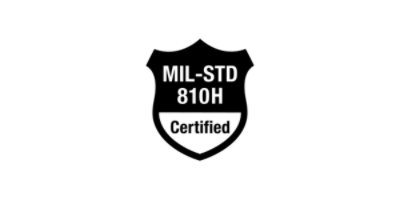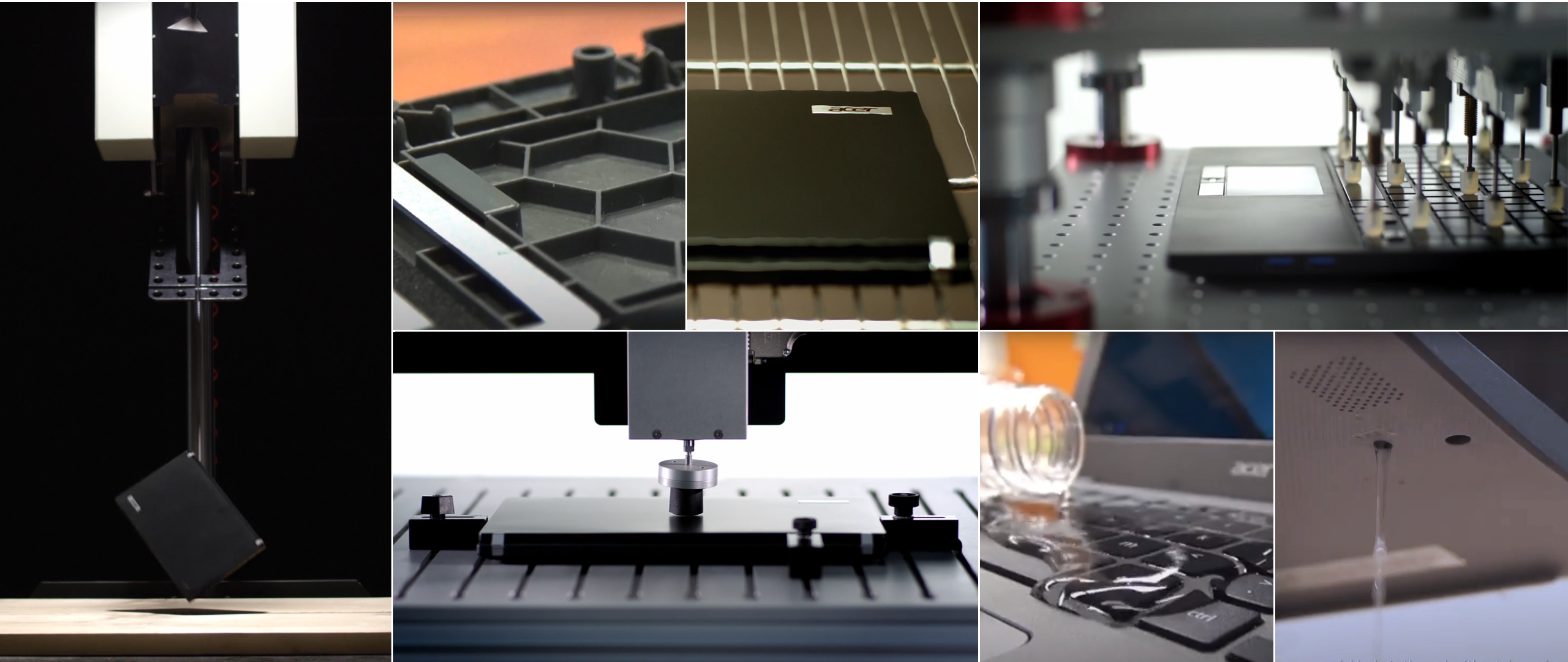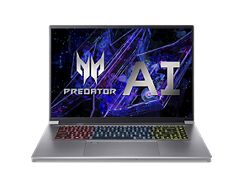Military Grade Reliability
Acer’s commitment to your business begins before you open the package. By testing our products to MIL-STD-810H standards and Ingress Protection against water and dust you can be assured that your product will withstand more than you throw at it on an average day in the classroom, warehouse or on site.

MIL-STD-810H Standards
The following items are the tests that devices bearing the MIL-STD-810H label have passed.
PREDATOR TRITON NEO 16 – GAMING LAPTOP
High and Low Temperatures Tests3
Humidity Test
Vibration Test
Drop Test
Rain Test
Dust Test
ENDURO - Ruggedized Devices
High and Low Temperatures1
Rain
Humidity
Vibration Test1
Drop Test1
Sand and Dust2
Low Pressure (Altitude) Testing2
Salt Fog2
Temperature Shock2
TravelMate - Business Laptops
High and Low Temperatures
Rain
Humidity
Vibration Test
Drop Test
Shock Test2
Chromebook - Work and Study
High and Low Temperatures
Rain
Humidity
Vibration Test
Drop Test
Sand and Dust2
High Temperature Operating2
Shock Test2
Low Pressure (Altitude) Testing2
Solar Radiation (Sunshine)2
Veriton - Commercial PCs
High and Low Temperatures
Humidity
Vibration Test
Drop Test
Sand and Dust2
ENDURO Urban – Stylish Durability
Drop Test
Vibration Test
Sand and Dust2
Humidity2
High and Low Temperatures1
Low Pressure (Altitude) Testing2
Recommended for You
IP Testing
Ingress Protection testing is separate to MIL-STD-810H and offers a guarantee as to how much dust and liquid the device will withstand. It is published by the International Electrotechnical Commission (IEC). The equivalent European standard is EN 60529.
The first number represents the amount of solids that can enter, and the second number represents the amount of protection from moisture such as drips, sprays, submersion etc. The table below explains what each number means. For example IP 68 is fully resistant to dust and submersion in water for long periods.



Protected against solid objects over 50mm (1.96”) in diameter e.g. hands, large tools.

Protected against solid objects not over 80mm (3.14) in length and 12 mm in diameter.

Protected against solid objects over 2.5mm (0.09”) e.g. wire, small tools.

Protected against solid objects over 1mm (0.04”) e.g. wires.

Partial protection against dust that may harm equipment.

Totally protected against dust ingress including a vacuum seal, tested against continuous airflow.

Protected against vertically falling drops of water or condensation.

Protected against falling drops of water, deflected up to 15°from vertical.

Protected against sprays of water from any direction, even if the case is deflected up to 60° from vertical.

Protected against splash water from any direction for a minimum of 10 minutes.

Protected against low pressure water jets (6.3mm (0.24”)) from any direction. Limited ingress permitted.

Protected against high pressure water jets from any direction. Limited ingress permitted.

Protected against the effects of immersion in water between 15cm (5.90”) and 1 meter (39.37”) for 30 minutes.

Protected against the effects of immersion in water under pressure for long periods.
2 Tested on specific models only. See individual product pages for details.
3 Consisted of four different tests:
High Temperature Test I, Low Temperature Test I: 48 hours Non-Operating
High Temperature Test II, Low Temperature Test II: 8 hours Operating










